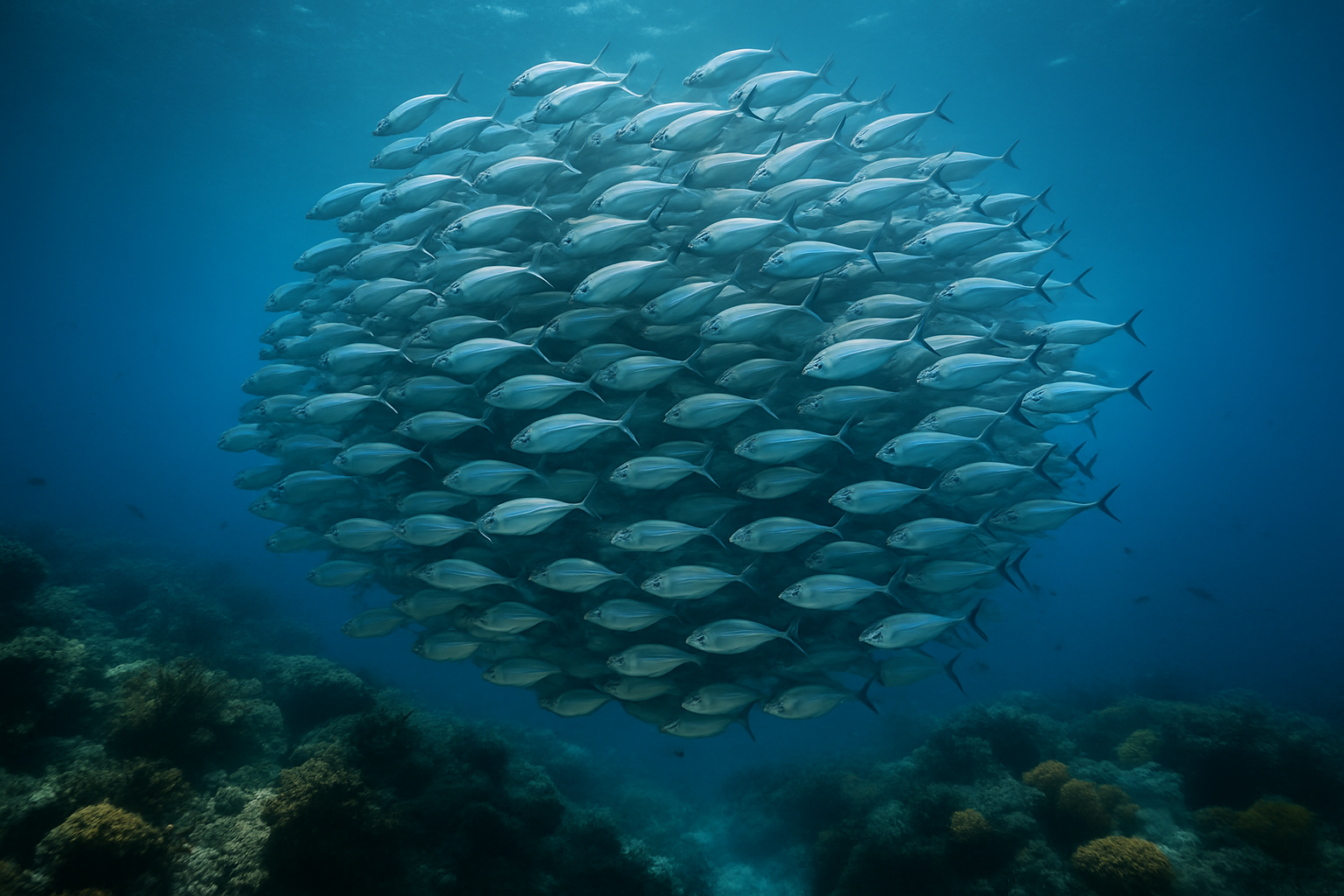Underwater Choreography: The Mesmerizing World of Fish Shoaling
Beneath the surface of our oceans, lakes, and rivers lies a captivating spectacle of nature's grand design. Fish shoaling, a phenomenon where hundreds or even thousands of fish move in synchronized patterns, has long fascinated marine biologists and casual observers alike. This article delves into the intricate world of fish shoaling, exploring its evolutionary significance, the complex behaviors involved, and the latest scientific discoveries that shed light on this mesmerizing underwater dance.

The Evolution of Shoaling Behavior
Fish shoaling is believed to have evolved as early as 50 million years ago, during the Eocene epoch. Fossil records show evidence of shoaling behavior in ancient fish species, suggesting that this collective strategy has been a crucial aspect of aquatic life for eons. The primary driver behind the evolution of shoaling was likely the need for protection against predators. By moving in large groups, individual fish could reduce their chances of being singled out and attacked.
Over time, shoaling behavior became more complex and refined. Different species developed unique shoaling patterns and strategies, adapting to their specific environments and predator-prey dynamics. For instance, some species form tight, spherical formations when threatened, while others opt for loose, spread-out configurations during foraging activities.
The Science Behind Synchronized Swimming
At first glance, the coordinated movements of a fish shoal might seem like magic. However, behind this underwater ballet lies a fascinating interplay of sensory systems and social dynamics. Fish rely on a combination of visual cues, lateral line sensing, and chemical signals to maintain their position within the shoal and respond to changes in direction.
The lateral line, a sensory organ running along the sides of fish, plays a crucial role in shoaling behavior. It allows fish to detect minute changes in water pressure and movement, enabling them to sense the position and movements of nearby fish. This sensory information, combined with visual input, allows for rapid and coordinated responses to threats or changes in the environment.
Benefits Beyond Protection
While protection from predators is a primary advantage of shoaling, this behavior offers numerous other benefits to fish. Improved foraging efficiency is one such advantage. By working together, shoaling fish can cover more area and locate food sources more effectively than individual fish. Some species even use their shoaling patterns to herd and trap smaller prey fish.
Shoaling also plays a vital role in reproduction for many fish species. Large gatherings can serve as breeding grounds, increasing the chances of finding suitable mates. Additionally, some species use their shoaling formations to create elaborate courtship displays, attracting potential partners through synchronized movements and patterns.
Shoaling in Different Aquatic Environments
Fish shoaling behavior is not limited to marine environments. Freshwater species in lakes, rivers, and even small streams exhibit various forms of shoaling. The specific patterns and behaviors can vary greatly depending on the habitat, predator presence, and environmental conditions.
In coral reefs, for example, many species form tight, stationary shoals that hover near the coral structures. These formations allow the fish to quickly retreat into the safety of the reef when threatened. In contrast, open-water species like tuna or mackerel form more dynamic, fast-moving shoals that can cover vast distances in search of food or during migrations.
Human Impact and Conservation Implications
As with many aspects of marine life, human activities have begun to impact fish shoaling behaviors. Overfishing, pollution, and climate change are altering the delicate balance of aquatic ecosystems, potentially disrupting the shoaling patterns of various species. Some studies have shown that exposure to certain pollutants can impair the sensory abilities of fish, affecting their capacity to coordinate within a shoal effectively.
Understanding fish shoaling is crucial for conservation efforts and sustainable fisheries management. By recognizing the importance of these collective behaviors in the life cycles and survival strategies of fish species, we can develop more effective protection measures and fishing practices that minimize disruption to these essential underwater communities.
Technological Advancements in Studying Shoals
Recent technological innovations have revolutionized our ability to study and understand fish shoaling behavior. Advanced underwater cameras, drones, and sonar systems now allow researchers to observe and analyze shoaling patterns in unprecedented detail. Computer modeling and artificial intelligence are also being employed to simulate and predict shoaling behaviors under various conditions.
These technological advancements are not only enhancing our scientific understanding but also have practical applications. For instance, some fishing operations now use sophisticated sonar systems to locate and identify specific shoals, potentially reducing bycatch and improving the sustainability of their practices.
The Future of Fish Shoaling Research
As our understanding of fish shoaling continues to grow, new questions and areas of research emerge. Scientists are now exploring the potential cognitive abilities involved in shoaling, investigating whether fish possess a form of collective intelligence that emerges from their group behavior. Others are studying how shoaling patterns might be affected by ongoing climate change and ocean acidification.
The study of fish shoaling also has implications beyond marine biology. Engineers and roboticists are drawing inspiration from these natural systems to develop swarm robotics and improve autonomous vehicle coordination. As we continue to unravel the mysteries of this underwater choreography, we may find solutions to complex problems in fields ranging from environmental conservation to artificial intelligence.
In conclusion, fish shoaling represents one of nature’s most spectacular and sophisticated collective behaviors. From its evolutionary origins to its modern-day implications for conservation and technology, this phenomenon continues to captivate scientists and nature enthusiasts alike. As we peer into the depths of our planet’s waters, we’re reminded of the intricate connections and ingenious strategies that have evolved in the aquatic world, offering us valuable lessons in cooperation, adaptation, and survival.





